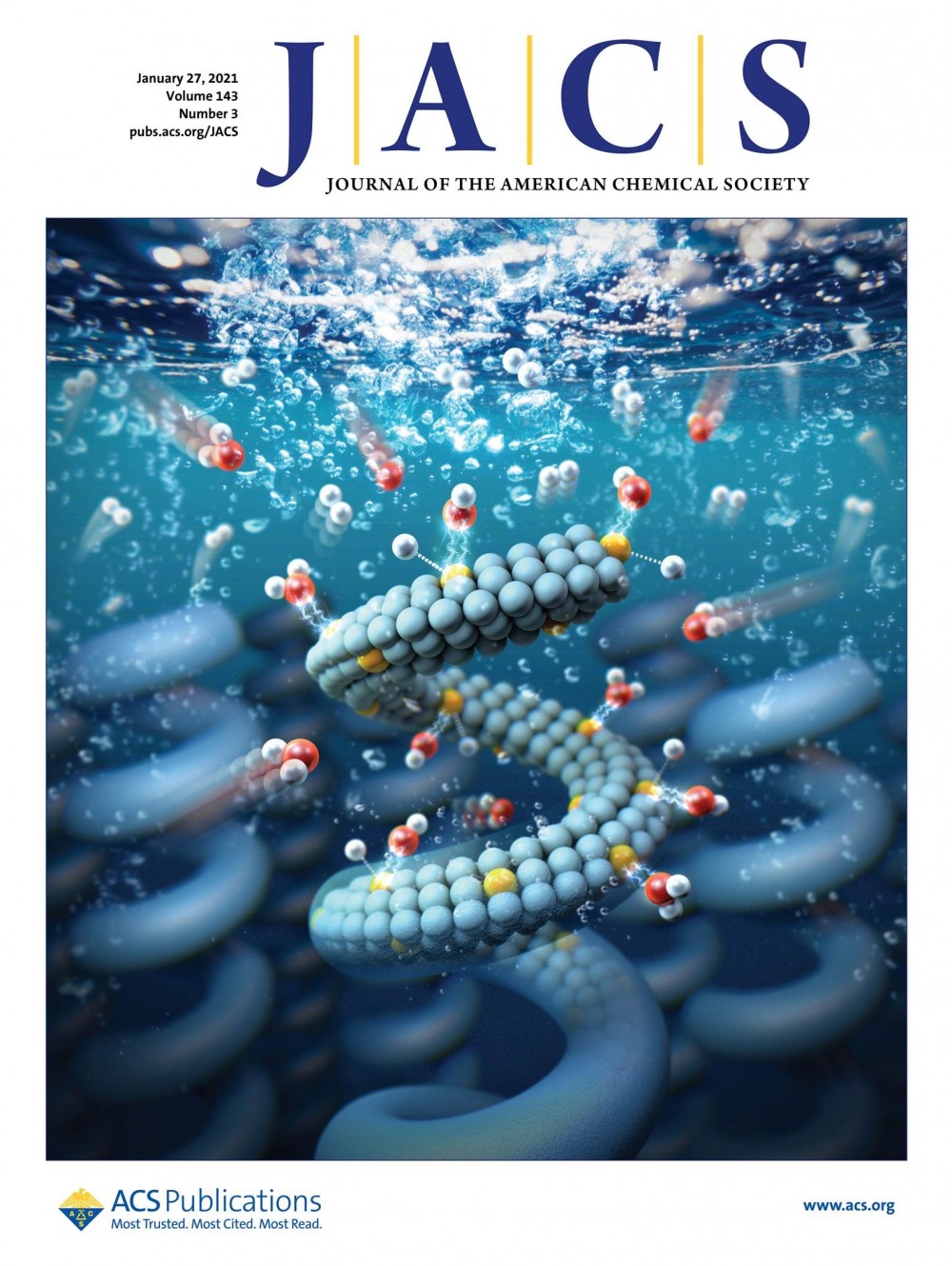
연구
Research Outcome
미래를 창조하는 포스텍 화학공학과
[표지논문] Tailoring Binding Abilities by Incorporating Oxophilic Transition Metals on 3D Nanostructured Ni Arrays for Accelerated Alkaline Hydrogen Evolution Reaction
- Title of paper
- [표지논문] Tailoring Binding Abilities by Incorporating Oxophilic Transition Metals on 3D Nanostructured Ni Arrays for Accelerated Alkaline Hydrogen Evolution Reaction
- Author
- [한정우교수 연구실] 니켈 기반 알칼라인 수소생산 촉매설계
- Publication in journal
- Journal of the American Chemical Society 143 (2021) 1399-1408.
- Publication date
- 2021.01
[Abstract]
Developing efficient and inexpensive electrocatalysts for the hydrogen evolution reaction (HER) in alkaline water electrolysis plays a key role for renewable hydrogen energy technology. The slow reaction kinetics of HER in alkaline solutions, however, has hampered advances in high-performance hydrogen production. Herein, we investigated the trends in HER activity with respect to the binding energies of Ni-based thin film catalysts by incorporating a series of oxophilic transition metal atoms. It was found that the doping of oxophilic atoms enables the modulation of binding abilities of hydrogen and hydroxyl ions on the Ni surfaces, leading to the first establishment of a volcano relation between OH-binding energies and alkaline HER activities. In particular, Cr-incorporated Ni catalyst shows optimized OH-binding as well as H-binding energies for facilitating water dissociation and improving HER activity in alkaline media. Further enhancement of catalytic performance was achieved by introducing an array of three-dimensional (3D) Ni nanohelixes (NHs) that provide abundant surface active sites and effective channels for charge transfer and mass transport. The Cr dopants incorporated into the Ni NHs accelerate the dissociative adsorption process of water, resulting in remarkably enhanced catalytic activities in alkaline medium. Our approach can provide a rational design strategy and experimental methodology toward efficient bimetallic electrocatalysts for alkaline HER using earth-abundant elements.
DOI: doi.org/10.1021/jacs.0c10661
Link: https://pubs.acs.org/doi/10.1021/jacs.0c10661




